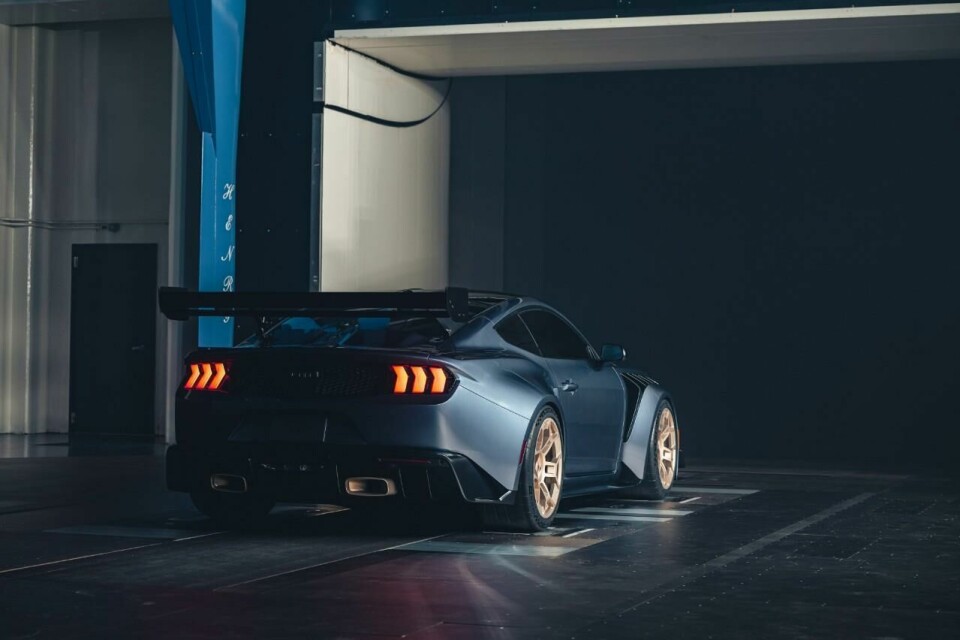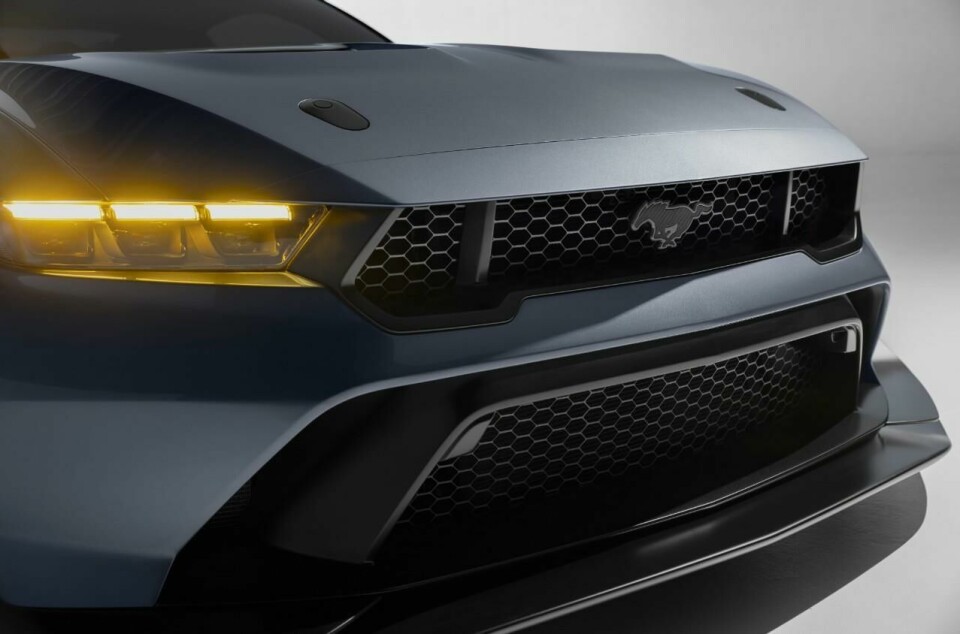
Ford Mustang GTD emerges from secret skunkworks
The Blue Oval’s fastest road-going Mustang was the result of a private project between select designers and race engineers. At the car’s premiere in Pebble Beach, Ford global design director Joel Piaskowski gave CDN’s Laura Burstein the inside scoop
In the industrial Detroit suburb of Allen Park, MI, a tiny operation began in the spring of 2022: a secret project to develop the fastest, most powerful production Mustang ever. “This is a Mustang on steroids,” Ford global design director Joel Piaskowski told us in an exclusive interview during Monterey Car Week. “We developed the GTD in this metal shed away from everyone. It was a skunkwords NDA program.”
Derived from the GT3 race car revealed earlier this year which will race at Le Mans in 2024, the GTD is a street-legal Mustang with features that carry over from the race car including a carbon fibre body, magnesium wheels, and a carbon-fibre driveshaft. It’s powered by a supercharged 5.2-litre V8 internal combustion engine, with power sent to the rear wheels via an eight-speed transaxle.

Race-engineered components include a pushrod suspension with high-performance dampers supplied by Multimatic, who boasts clients from F1 to off-road racing. Ford hasn’t released exact specifications, but execs say it will produce more than 800hp and will be a limited-production car with a price tag of around US$300,000.
At the car’s debut, Ford CEO Jim Farley said the GTD program was inspired by OEMs that have parlayed successful racing pedigrees into super-high-performance customer cars. “We looked at what Mazda had done, and especially what Porsche had done in terms of their racing programs, and we thought, maybe we could do it even better,” Farley said. “The vision for this is totally different from any high performance Mustangs we’ve done.”
Piaskowski says the design team comprised about eight people, including Ford brand and CUV design director Gordon Platto, design manager of Ford Performance Anthony Colard, and colour and trim designers. “The team that was part and parcel was already involved in Ford performance vehicles including the race car,” he says. It took about a year and a half from the beginning of the project until the model was ready to show in California.
“The driving force behind this was designing around the technology,” Piaskowski says. “You look at how wide the rear haunches are, it has a great amazing stance but it’s all function driven. Everything underneath the skin is true race car technology.”
As a bonafide track car, aerodynamics and airflow management were key to the design. An active aero system includes a moveable front-splitter flaps and a DRS-style rear wing that opens for better straightaway speed and closes for more downforce during cornering.
One of Piaskowski’s favourite design elements is how the wing attaches to the car. “What’s really neat is the rear stanchion for the spoiler, cantilevered off the sail panel. This is really unique and different to other cars in the class that have a vertical gooseneck. This really helps to give the car a forward gesture, looks slippery and fast. We pushed this as a design statement,” he explains.

Piaskowski is particularly proud of the paint colour, dubbed Polymymetic Grey. He reveals it was inspired by the T1000, the android villain to Arnold Schwarzenegger’s protagonist in the movie Terminator 2. “Outside it has this really beautiful blue-grey quality; you can see how the blue travels across the top surfaces and across the body side,” he says. “It’s really juicy.”
While a full interior of the GTD was not shown in Pebble Beach, Piaskowski tells us it will also have many elements inspired from racing, including Recaro sport seats. “There will be some more things that will come out in due course,” he hints. But the team has time; the Mustang GTD is not slated for deliveries until late 2024 or early 2025. “Quite frankly, we’re still doing some detail work on the interior and finishing up all the details around the car, but basically what you see here is what your’e going to get,” he says.
Meanwhile, Piaskowski lauds the creativity and passion of this tiny skunkworks team, the likes of which are often impossible to form in large, volume-driven companies. “Just the fact that the car is here is amazing,” he says. “Such a cool team collaborated on this, from the engineering team, to the design team, to everyone in between. It was a monumental feat.”




















